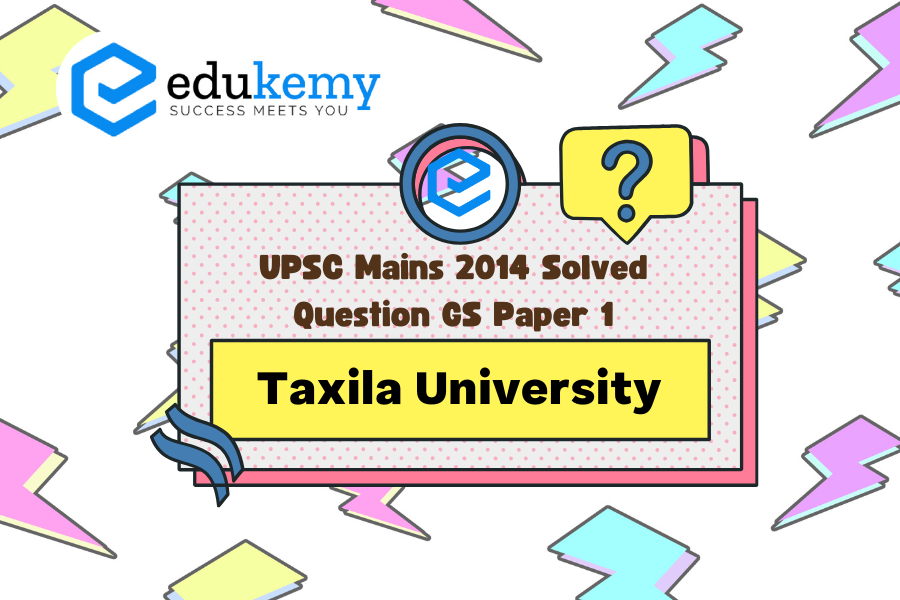Taxila University stands as a testament to the ancient world’s pursuit of knowledge, boasting a rich history dating back over two millennia. Situated strategically along the trade routes of ancient India, its prominence attracted scholars and intellectuals from diverse backgrounds. Renowned figures in various fields, from philosophy to medicine, were associated with this esteemed institution. However, while Taxila shares similarities with institutions like Nalanda, it differs significantly in its structure and organization. Unlike Nalanda, which is often regarded as a precursor to modern universities, Taxila operated more as a center for advanced learning and scholarly exchange rather than a formalized educational institution. Its emphasis on mentorship and individualized study contrasts with the standardized curricula and bureaucratic structures of contemporary universities. Despite this distinction, Taxila’s legacy as a center of intellectual exploration and cultural exchange remains enduring and influential.
Tag: Indian culture.
Contents
Decoding the Question:
- In Introduction, try to describe briefly about Taxila university.
- In Body, substantiate why Taxila university is not considered as a university in the same modern sense as Nalanda university.
- Conclude that despite not being considered as a university in the modern sense, many renowned learned personalities of different disciplines were associated with it.
Answer:
The University of Ancient Taxila was a historical institution of higher learning situated at Taxila, close to the Indus River’s bank.Both Nalanda and Taxila Universities were renowned ancient institutions of higher learning.The famous treatise Arthashastra by Chanakya, is said to have been composed in Taxila itself. By some accounts, Taxila university is one of the earliest universities in the world, while many do not consider it a university in the modern sense.

Reasons Why Taxila University is not Considered as a University in the Modern Sense as Nalanda University:
- At Nalanda University, astronomy, mathematics, science, and politics were all offered as courses. Additional fields were also accessible for study. While Taxila University offered courses in artistic areas like archery, hunting, and teaching Vedic literature.
- While Nalanda University had many students from Japan, China, Tibet, Persia, and Turkey, Taxila University exclusively had pupils from India. This demonstrates that Nalanda University students are more engaged and successful.
- The income from 100 villages covered the expenses of Nalanda University on the other hand the requirements of Taxila university were met by the rulers.
- According to some scholars, Taxila was not a university town with lecture halls and residential quarters, which can be seen at ancient Nalanda university.
- At Taxila, the preceptor housed his own pupils, who paid for their board and lodging in cash or in the form of service to the teacher and his family.
- The Buddhist monasteries also catered to the needs of the students and monks at Taxila university. Whereas Nalanda university functioned from the revenue collected from the surrounding villages.
- In Taxila university the teachers living there may not have had official membership of colleges, in contrast to the Nalanda university.
- The centralized system of schooling or syllabus in Taxila was absent as compared to Nalanda university.
- The concept of the examination system and degree certificate was absent in Taxila university.
- The education system was not as systematic as in Nalanda university and was modified according to a student’s Caliber.
- The teachers of Taxila had complete autonomy, and they designed their own school of learning, rules, and regulation, while in Nalanda university a well-defined structure of administration was followed.
Still, Taxila university became famous as a place of learning in ancient India. Among its noted pupils were the legendary Indian grammarian, Panini. He was an expert in language and grammar and authored one of the greatest works on grammar called Ashtadhyayi. Jivaka, one of the most renowned physicians in ancient India, studied at Taxila university. Students came to Taxila from Kashi, Kosala, Magadha and from other countries despite the long and arduous journey they had to undertake. Even though Taxila university is not seen in the same modern sense as Nalanda university, its contribution in academics cannot be disputed.
In case you still have your doubts, contact us on 9811333901.
For UPSC Prelims Resources, Click here
For Daily Updates and Study Material:
Join our Telegram Channel – Edukemy for IAS
- 1. Learn through Videos – here
- 2. Be Exam Ready by Practicing Daily MCQs – here
- 3. Daily Newsletter – Get all your Current Affairs Covered – here
- 4. Mains Answer Writing Practice – here


